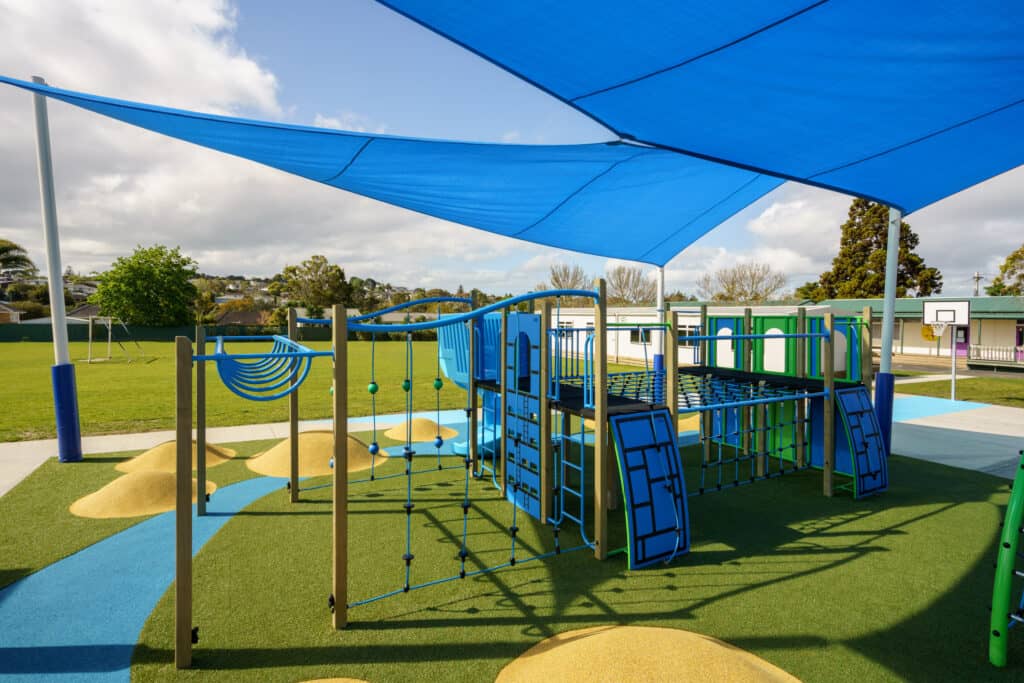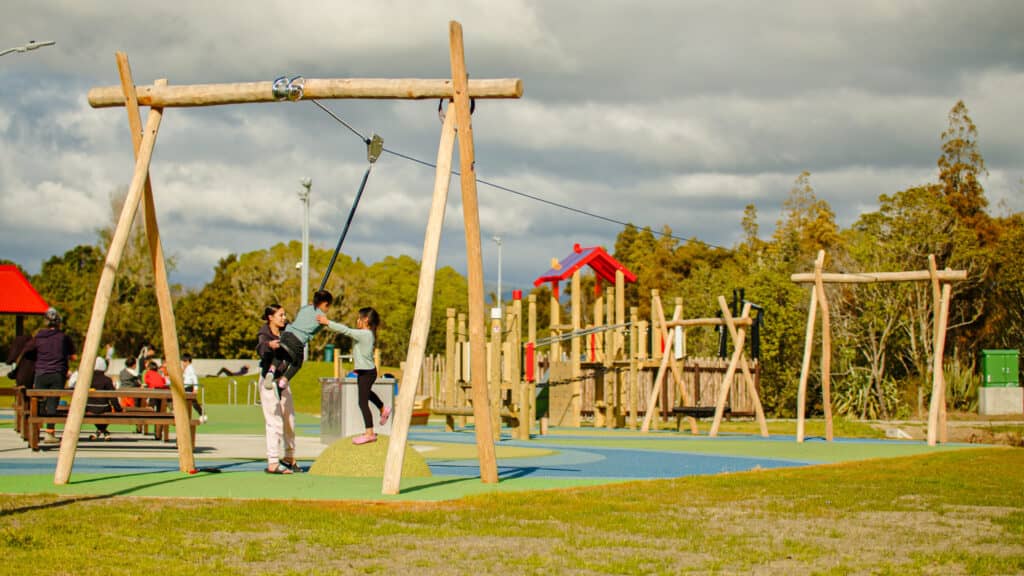From junk playgrounds, moving on to metal, plastic, nature play and recycled products. Equipment in a playspace can vary with the time and the trends of the moment, but you can always see two types that will always be more prevalent: wood and plastic.
In this article, we will compare them and highlight the main differences and benefits of these two types of play equipment.
Plastic Equipment
Plastic, a relatively modern entrant in playground design, has gained popularity due to its versatility and durability.
Advanced manufacturing techniques have allowed various designs, from vibrant slides to intricate climbing structures. It all depends on your budget.

Benefits of Plastic Equipment
The primary advantages of plastic are its durability and low maintenance. Unlike wood, plastic doesn’t splinter or rot, making it a long-lasting option.
Additionally, plastic playgrounds can be a kaleidoscope of colours, appealing to children’s love for bright and engaging environments.
Common Issues with Plastic Equipment
However, plastic is not without its drawbacks. Environmental concerns top the list, as most plastics are not biodegradable.
Exposure to extreme temperatures can also affect its longevity, and due to its ease of marking and cutting, it may be prone to vandalism.
Another common issue is the aesthetic. Even with the ease of creating different modules of different shapes, plastic can look tacky or make a space too “industrial”.
When to Use Plastic Equipment
Plastic is ideal for areas where the climate is unfavourable to natural equipment. It also offers a colourful and safe environment for younger children.
Examples include modular play structures with slides and climbing areas, themed play equipment like panels, and other sensory features made from plastic.
Nature Play and Wood Equipment
Wood, the traditional choice, has seen a resurgence with the growing emphasis on nature play – a concept that encourages children to engage with natural environments.
With its organic look and feel, wood equipment seamlessly integrates into natural settings, enhancing the outdoor experience.

Benefits of Wood Equipment
Wood’s aesthetic appeal is unmatched. It blends with the outdoor environment, offering a more calming, nature-inspired play area.
Wood is a sustainable choice environmentally, mainly when sourced responsibly. It also provides a tactile experience, connecting children more closely with nature.
It can be easily customised with colours and shapes and still keep the natural feeling to it.

When to Use Wood Equipment
Wood is best in natural settings and for promoting nature-based play.
Examples include wooden climbing frames and treehouses, which offer adventurous play; balance beams and log rolls for developing coordination; sand and water play areas for sensory experiences; and swing sets and benches that harmonise with natural landscapes.
Bespoke wood equipment is also great for destination playspaces. You can achieve unique features in your space with a team of great woodworkers and designers.
Environmental Impact
The sustainability of wood, mainly when sourced responsibly, contrasts with the environmental concerns associated with plastic, highlighting the importance of choosing materials that align with ecological values.
Conclusion
Choosing between wood and plastic for playground equipment involves considering various factors, including aesthetics, functionality, safety, cost, and environmental impact.
By understanding each material’s unique benefits and limitations, decision-makers can create engaging, safe, and sustainable play environments that enrich childhood experiences.

